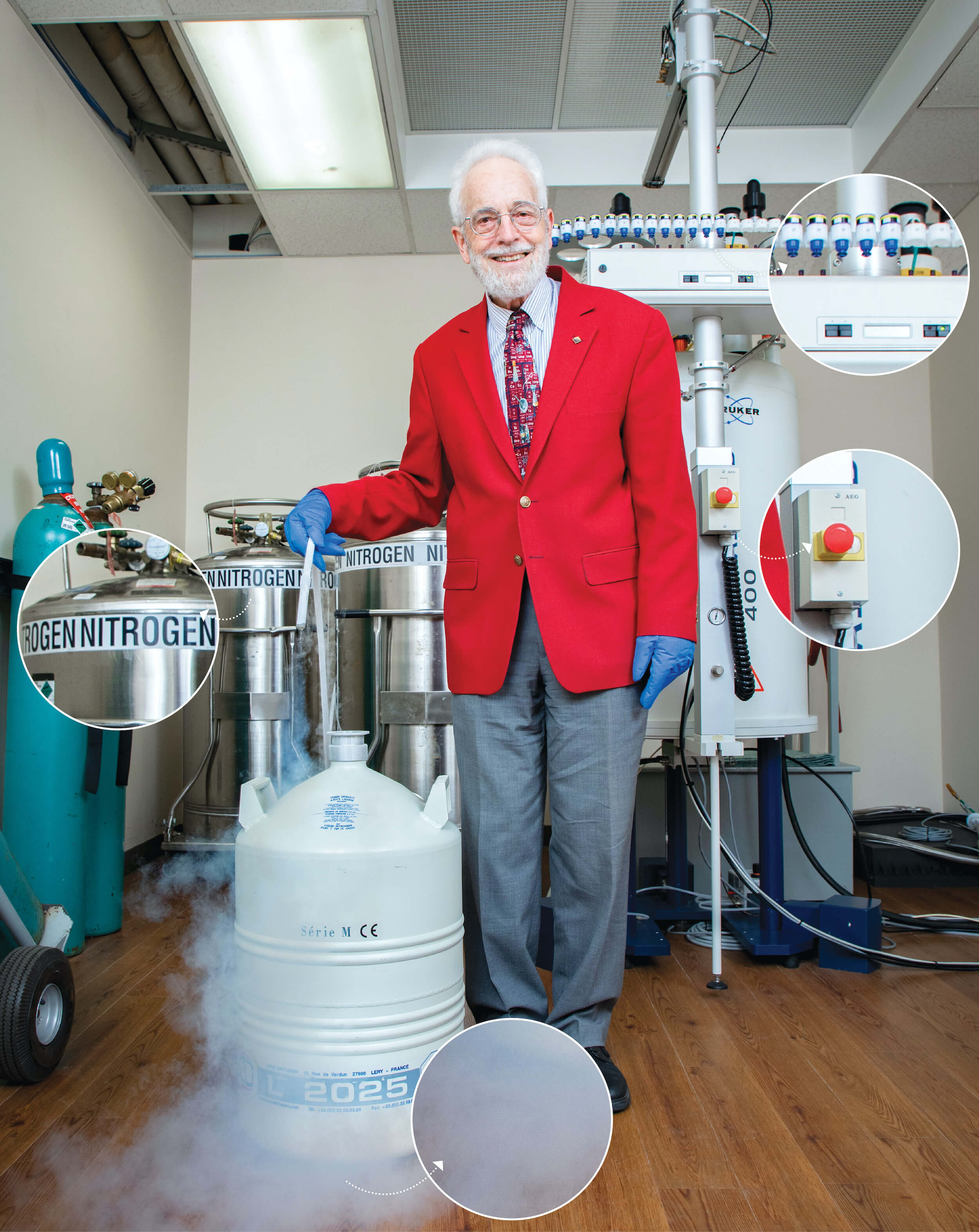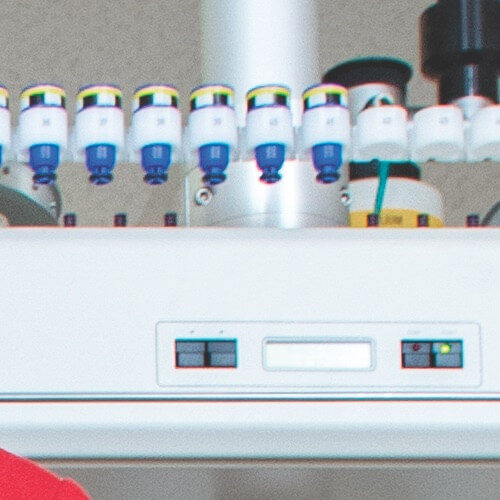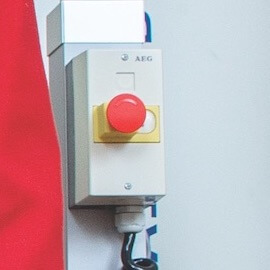
Office Space: Bill Schreiber, Ph.D.
One of Bill Schreiber’s favorite spots in the Edison Science Building is the NMR Lab, which houses the most complex and expensive scientific instrument on campus: a nuclear magnetic resonance (NMR) spectrometer. He gave us a tour.

Liquid Nitrogen
The NMR machine’s core contains a powerful electromagnet with 10 miles of superconducting wire that must be cooled to -452° F using liquid helium, which is expensive and unrecoverable. Liquid nitrogen is used to cool the outer core of the machine to minimize the helium loss.

Sample Changer
In most instances, an automatic sample changer is used. Information about each sample and the NMR experiment to be run are entered into the computer, and the samples are then processed. The resulting files are analyzed using specialized software to identify materials researchers are working with.

NMR Spectrometer
Faculty and student researchers use this to get essential information about the environments of hydrogen, carbon, phosphorus, and other elements in chemical compounds. In some cases, samples are run over a range of temperatures to explore changes that are occurring within complex substances.

The Fog
At -320° F, liquid nitrogen is so cold that when released, it immediately causes water in the atmosphere to condense, creating a dense fog. It can be used to freeze things almost instantly, which comes in handy when students in the Science of Food and Cooking course make ice cream.